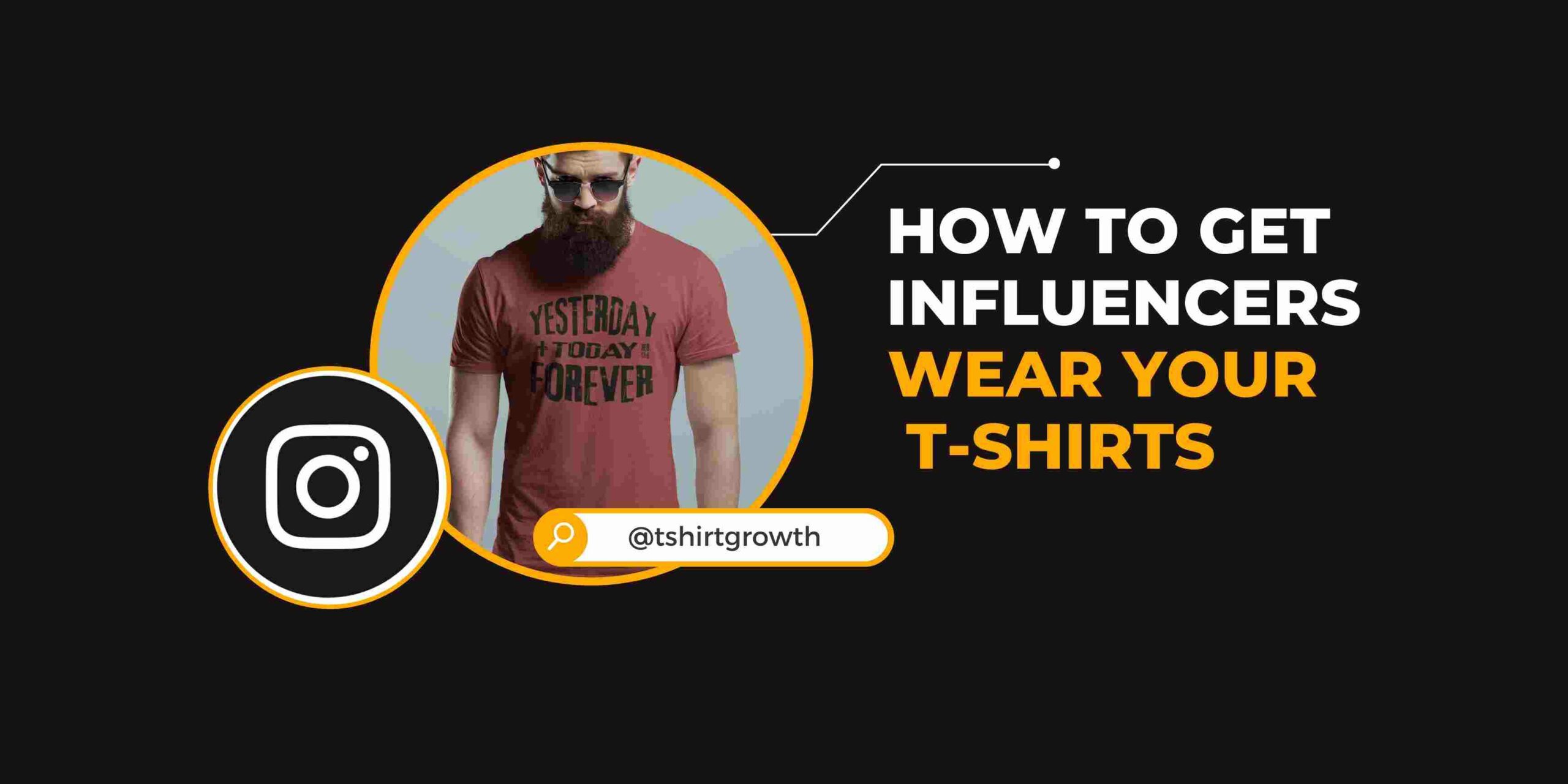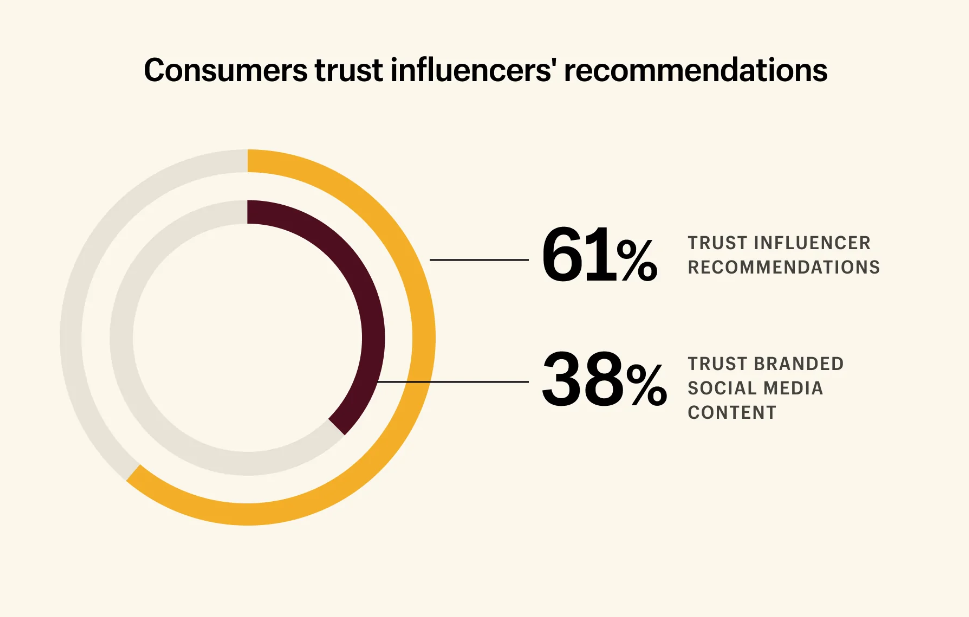While growing my t-shirt brand to over 6-figures a year, I was fortunate enough to have several influencers wear my merch.
Research reveals that 61% of consumers trust influencer recommendations. This is way more than the 38% of end users that trust social media brand content.
So would you like to know how to get influencers to wear your merch and promote your clothing brand?
In this step-by-step guide, I will show you how I did it.
Let’s get started. But first, let’s understand what an influencer is.
What is an Influencer?
Influencers in the social media space are people that have built a reputation for their expertise and knowledge on a particular topic or niche. They make posts regularly about the particular topic or niche on their preferred social media channel (primarily Instagram and Tik Tok) and have generated a huge following of engaged and enthusiastic people who pay close attention to their opinions and views on various topics within the particular niche.
Businesses target influencers because they effortlessly create social trends and can encourage their social media followers to purchase the products they promote.
But influencers aren’t always specific to social media channels. While Instagram was my favorite channel for influencers and partnerships, I also was able to create relationships with larger influencers outside of Instagram.
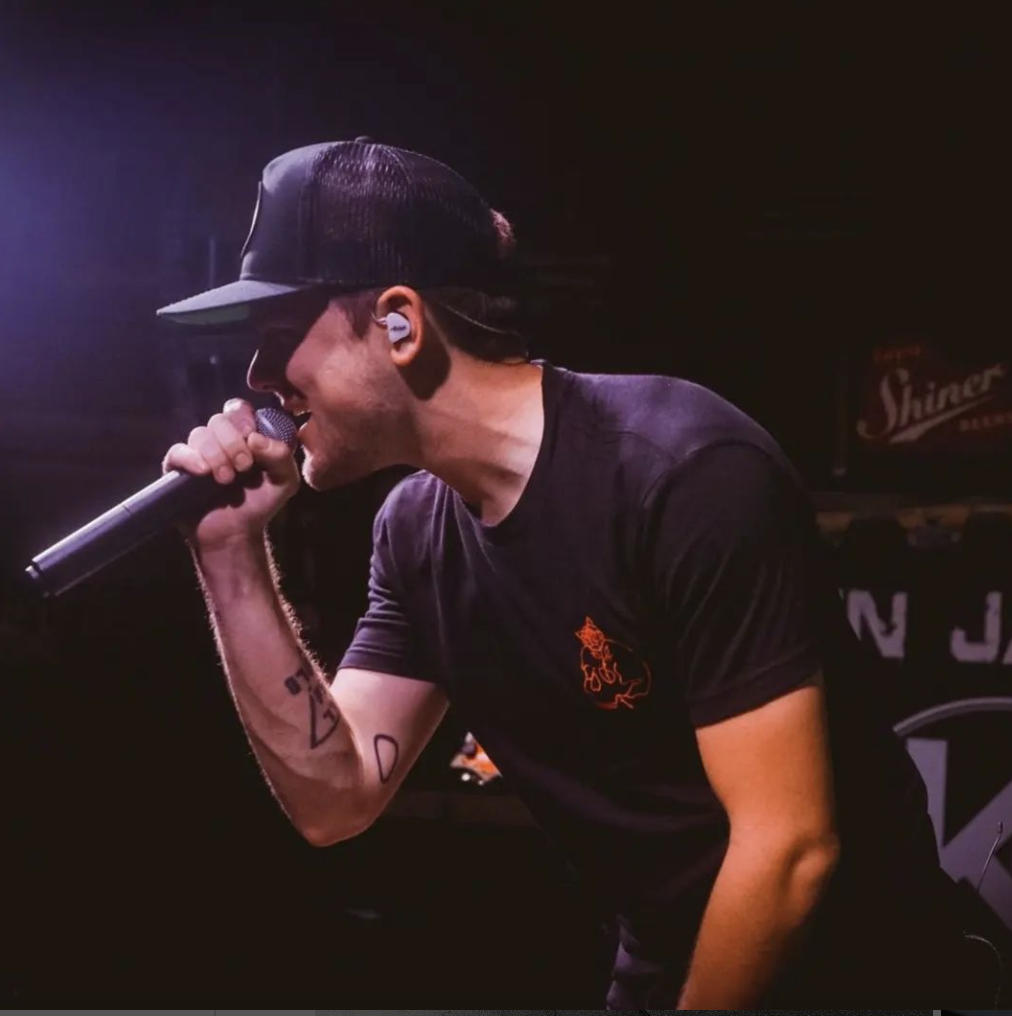
Step 1: Know your Brand and Target Audience
The niche of your t-shirt company and its social media following will ultimately determine the type of influencers you can close.
Most big-time celebrities and influencers with over a million followers on Instagram, for example, may not consider the offer of a small t-shirt business with less than 1000 followers on the platform.
You can try sending out messages to mega influencers and you may succeed in closing 1 or 2 but that’s primarily hinged on probability.
Actionable data and case studies rather favor targeting multiple micro-influencers if your brand size is small and relying on the cumulation of promotion of all such influencers for the outcome of the campaign.
In addition, you need to know who you’re targeting as end-users. This will ultimately affect the type of influencer that’s right for your campaign. For example, if your merch is everything sweatshirts, targeting a hiking influencer won’t do much for end-user conversions.
So you need to understand your brand size and target audience and use that to carve out the type of influencer to target.

Step 2: Create a Branded Instagram Account and Build a Following
Instagram is currently the number one hotspot for influencer marketing. So if you’re going to find relevant influencers they’ll be here.
That said, you’d want to create a branded Instagram account and begin to build a following by searching relevant hashtags and engaging with content in your niche.
Your primary touchpoint when engaging with influencers would be your brand’s Instagram account so you’ll want it to have some structure.
Step 3: Find Niche-specific Influencers on Instagram
One of the simplest and quickest ways to find influencers in a particular niche on Instagram is to use hashtags and start following people that target the same niche audience.
When you find a relevant hashtag for your product and search for it on Instagram, you’ll see a “Top Posts” tab, most times, there, you can find influencers with posts generating the highest number of engagements and that have a large following.
Once you start following a large number of accounts that you might like to partner with, begin engaging with these accounts with likes, and especially comments. Create meaningful comments that show that you genuinely appreciate the content.
Do this across all the brands and influencers you are most interested in. The idea is to build a network. You want to connect with the people behind the accounts. That is the key to creating real relationships.
Step 4: Send the Influencer a Message
As mentioned in the first step, if you have a small apparel brand, go for micro-influencers, these are individuals with 1000 to 100,000 followers. However, they have a very loyal following in a very targeted niche.
You can also target nano-influencers, people with less than 1000 followers and immense influence in a comparatively narrow market.
Begin sending individual messages to people offering to send them merch.
Here’s how I did it:
“(Influencer), this is Bryan Robinson. I wanted to let you know that I have been enjoying your content. I’d love to send you some merch. Please let me know what size t-shirt you wear and where I can send it. Either way, keep up the great work!”
As soon as you hear back from account owners (and you will), you send t-shirts (or other merch) to the address they sent you. If you are able, send “pack-ins” like brand stickers. Optionally you can send a hand-written and signed letter to the influencer. Make sure to include your Instagram @account in the return and/or in the letter.
If you like, you can send a follow-up message to let them know the merch is en route. But after that, do not reach out to the influencer again unless they contact you first.
The next step is to wait.
When you make real relationships and you create awesome products, you don’t have to ask people to promote your brand.
Just a reminder, you don’t want to send a message like:
“Hello Joshua, I have a couple of shirts I’d love to send you in exchange for you promoting the shirts on your page. It would be amazing if you’d give us a shout-out during the unboxing! Regardless, we understand your time constraints and it would be perfectly fine if this isn’t possible.“
Instead, you do want to send a message that shows an acknowledgment of the influencer’s work. For example:
“Hello Joshua, I love your content, most especially, the video where you rejoined Veterans with their families! Thanks for all you do. To show you our appreciation for your work we would love to send you some of our merch! Thank you again!”
This second message shows the influencer that you’re not just interested in using them in exchange for free merch. But that you value their work and want to align with them because of their contribution to society.
You don’t want to directly request for the influencer to give you a shout-out. This gives your brand a positive reputation, which says you’re above “need”.
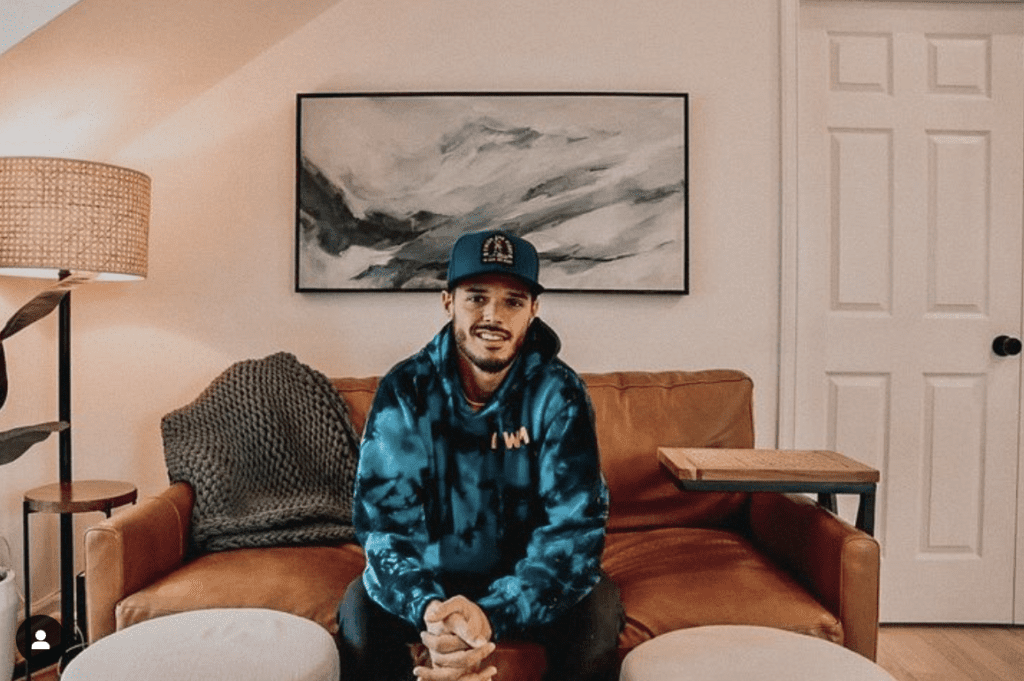
Again with this approach, about 75% of influencers will give you a shout-out after receiving your merch of their own volition.
Step 5: Send Merch to Small and Large Influencers
If you’re going for micro-influencers, you’ll most likely need more than one influencer to bring the big buck in. So you don’t want to send a variety of products to one influencer. Rather you want to send a shirt or two to each influencer, which makes it easier for your promotional product to have a wider reach.
Don’t be hesitant about sending t-shirts and merch to a prominent influencer. You may be surprised, but if you send t-shirts to several large influencers, you will likely get at least 1 who will wear your brand in their channels and drive a lot of traffic to your brand.
In the below image, Jase Robertson (from Duck Dynasty and the Unashamed Podcast) is wearing one of the designs I created for 316Tees. I did not ask Jase to wear this shirt and certainly didn’t expect to see him wearing it in a Facebook post. But he liked the shirt, and he wore it. This resulted in a lot of t-shirt sales, and I was humbled.
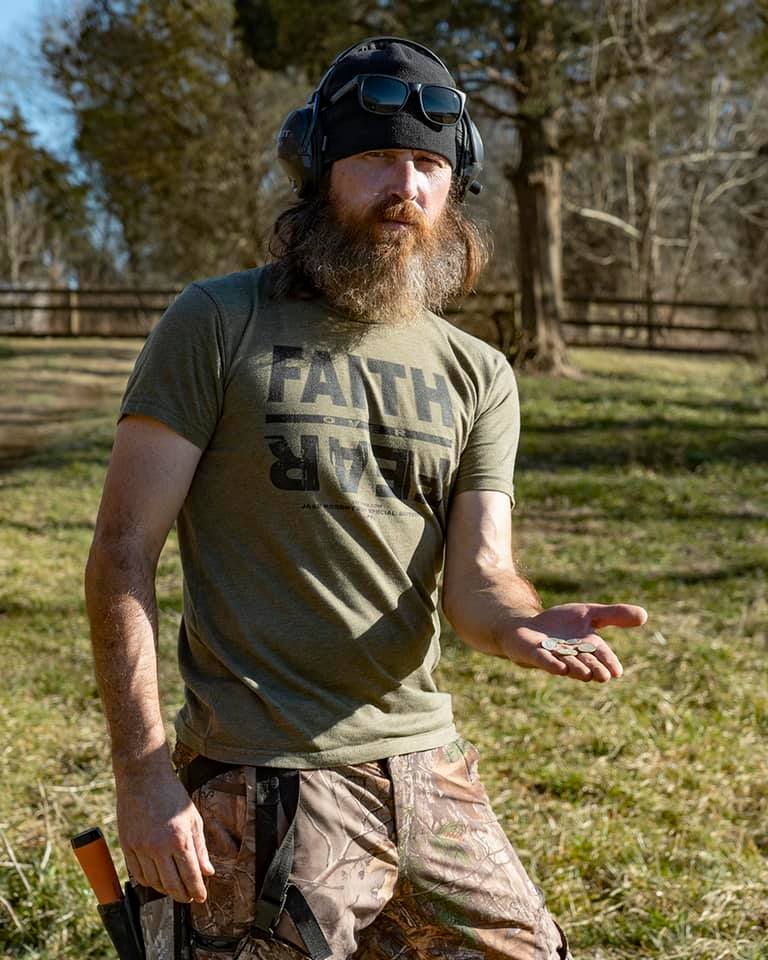
Make great products that resonate with people, and often you don’t even have to work to get your clothing on big-time influencers.
It’s not about begging people to wear your stuff. It’s about making genuine relationships with people. This works exceptionally well if you stand for a cause the influencer also stands for.
Create Real Relationships & Get Started!
That’s a wrap on how to get influencers to wear your merch!
One last thing. I’m not a fan of Brand ambassadors. It’s works for many clothing brands. But it’s not something I ever did. The reason is because it’s like “hiring” people to wear your clothing. It’s in opposition to partnering with real people and making real relationships. The two are completely different. I choose real relationships. It works and it’s the way to build a long-lasting brand.
Bryan E. Robinson is the former owner of TshirtGrowth. He has sold t-shirts since 2006 through dropshipping, screen printing, vinyl printing, DTG, Print on Demand, and more. Bryan has created his own t-shirt designs through Photoshop, Canva, and other platforms, as well as worked with freelancers to create many of his designs. Besides t-shirts, Bryan has over 18 years of experience in online marketing with eCommerce, B2B SaaS, B2C products, and more.

